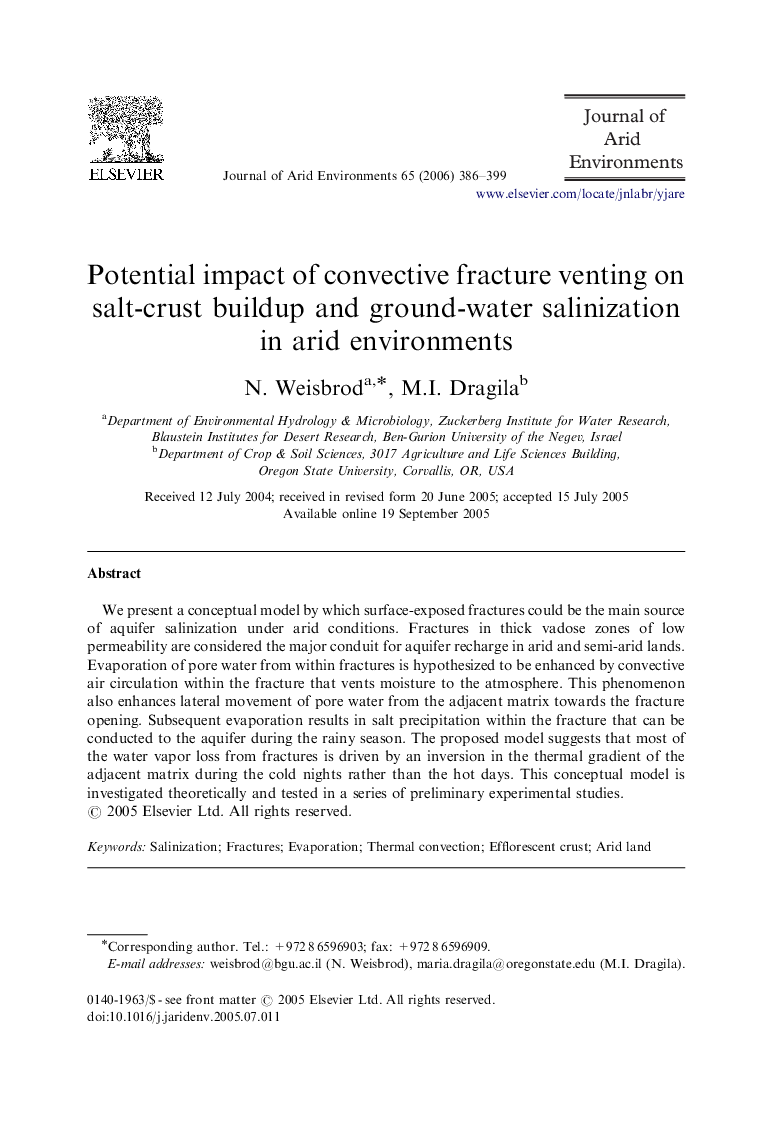| Article ID | Journal | Published Year | Pages | File Type |
|---|---|---|---|---|
| 4394766 | Journal of Arid Environments | 2006 | 14 Pages |
We present a conceptual model by which surface-exposed fractures could be the main source of aquifer salinization under arid conditions. Fractures in thick vadose zones of low permeability are considered the major conduit for aquifer recharge in arid and semi-arid lands. Evaporation of pore water from within fractures is hypothesized to be enhanced by convective air circulation within the fracture that vents moisture to the atmosphere. This phenomenon also enhances lateral movement of pore water from the adjacent matrix towards the fracture opening. Subsequent evaporation results in salt precipitation within the fracture that can be conducted to the aquifer during the rainy season. The proposed model suggests that most of the water vapor loss from fractures is driven by an inversion in the thermal gradient of the adjacent matrix during the cold nights rather than the hot days. This conceptual model is investigated theoretically and tested in a series of preliminary experimental studies.
